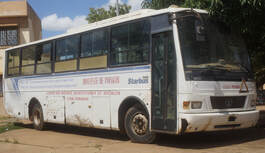
Does India Use Development Finance to Compete With China? A Subnational Analysis
Gerda Asmus, Vera Z. Eichenauer, Andreas Fuchs, and Bradley Parks
Forthcoming at Journal of Conflict Resolution
Abstract
China and India increasingly provide aid and credit to developing countries. This paper explores whether India uses these financial instruments to compete for geopolitical and commercial influence with China (and vice versa). To do so, we build a new geocoded dataset of Indian government-financed projects in the Global South between 2007 and 2014 and combine it with data on Chinese government-financed projects. Our regression results for 2,333 provinces within 123 countries demonstrate that India’s Exim Bank is significantly more likely to locate a project in a given jurisdiction if China provided government financing there in the previous year. Since this effect is more pronounced in countries where India is more popular relative to China and where both lenders have a similar export structure, we interpret this as evidence of India competing with China. By contrast, we do not find evidence that China uses official aid or credit to compete with India through co-located projects.
Published paper
Supplementary information
Working paper (January 2022)
Working paper (September 2021)
Working paper (June 2021)
Working paper (June 2021)
Database
Presentations at conferences and workshops
[Thanks to one of our excellent student research assistants for the photo!]
Gerda Asmus, Vera Z. Eichenauer, Andreas Fuchs, and Bradley Parks
Forthcoming at Journal of Conflict Resolution
Abstract
China and India increasingly provide aid and credit to developing countries. This paper explores whether India uses these financial instruments to compete for geopolitical and commercial influence with China (and vice versa). To do so, we build a new geocoded dataset of Indian government-financed projects in the Global South between 2007 and 2014 and combine it with data on Chinese government-financed projects. Our regression results for 2,333 provinces within 123 countries demonstrate that India’s Exim Bank is significantly more likely to locate a project in a given jurisdiction if China provided government financing there in the previous year. Since this effect is more pronounced in countries where India is more popular relative to China and where both lenders have a similar export structure, we interpret this as evidence of India competing with China. By contrast, we do not find evidence that China uses official aid or credit to compete with India through co-located projects.
Published paper
Supplementary information
Working paper (January 2022)
Working paper (September 2021)
Working paper (June 2021)
Working paper (June 2021)
Database
Presentations at conferences and workshops
- Silvaplana Workshop for Political Economy, Pontresina, Switzerland (07/2020)
- Séminaire DIAL at Université Paris Dauphine, France (09/2018)
- Annual Conference of the Verein für Socialpolitik Research Committee for Development Economics, Zurich, Switzerland (06/2018)
- Spring Meeting of Young Economists, Palma de Mallorca, Spain (06/2018)
- Annual Meeting of the European Public Choice Society, Rome, Italy (04/2018)
- Annual Conference of the International Political Economy Society, University of Texas, Austin, USA (11/2017)
- Workshop "Tracking International Aid and Investment from Developing and Emerging Economies", Heidelberg University, Germany (09/2017)
[Thanks to one of our excellent student research assistants for the photo!]
